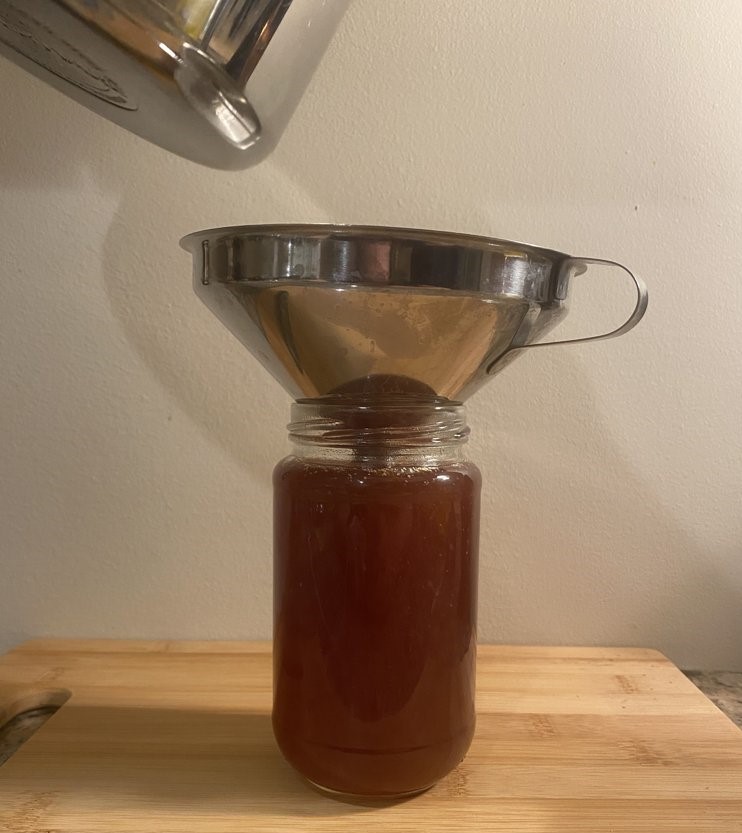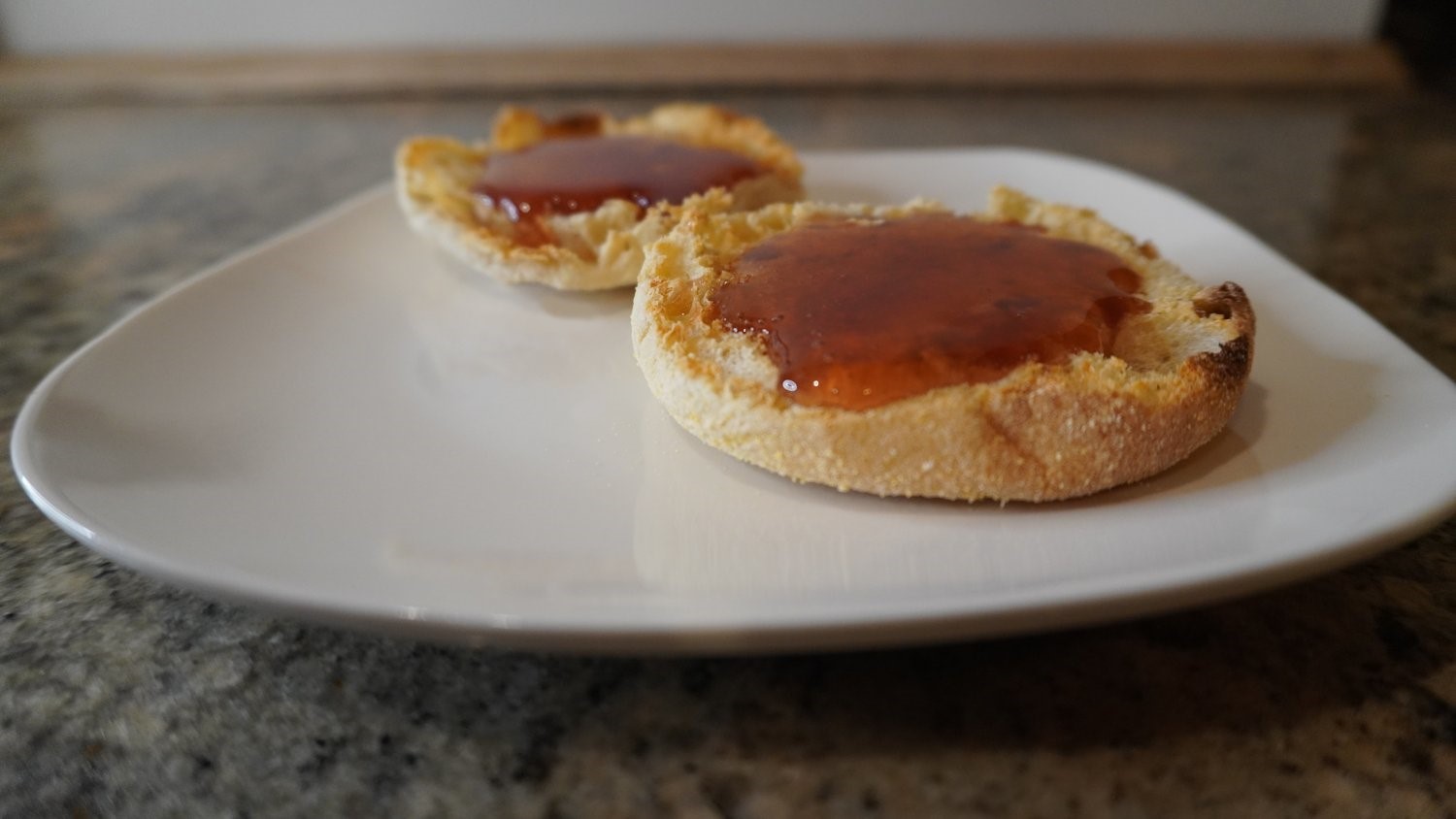Experiment #002: Homemade Grape Jam
Can grape jam be made at home without added pectin?
At the beginning of the summer, I started making strawberry jam. Since this was my first time making jam, I didn’t have high expectations. I just wanted to try it because we had a lot of extra strawberries at the time. I found a recipe that was simply 1:1 ratio of strawberries to sugar, with a small amount of lemon juice added.1 After boiling this mixture to 220 F (I went to 223 F just to be safe), it was done. I put it in a jar, let it cool, put it in the fridge, and the next day it was a perfect consistency. Perhaps a little bit looser than a store-bought jam, but it was perfect for putting on toast and crackers.Fast-forward to August, and I was in the same situation with some leftover grapes. I followed the same steps I used for the strawberries. I blended them, removed the skins through straining, and boiled until I reached 220 F (223 F just to be safe) and the result was… disappointing. It was basically one step thicker than grape juice. Needless to say, I was confused. Here was my understanding as of this point: That sugar and water (from the fruit juice) at a 1:1 ratio, heated to 220 F (the jam temperature) will turn into jam or jelly.2 The answer, it turns out, was a bit more complicated than that. But first, let’s differentiate between jams and jellies.Jam vs. Jelly The difference between jam and jelly is actually very simple: Jam is made from cooking mashed fruit whereas jelly is made from cooking fruit juice alone. This brings me to my first error: trying to make jelly instead of jam. Jelly usually relies heavily on added pectin, which helps hold the sugar and acid molecules into a gelatin-like structure. Jam, on the other hand, includes the fruit solids, which may contain naturally occurring pectin. The amount of naturally occurring pectin depends on the type of fruit used and the level of ripeness.The fruit I used in my last jam, strawberries, tend to have low pectin. This is typically compensated for in recipes with the addition of lemon juice or lemon rinds, as citrus fruits tend to have a high concentration of pectin.3 Grapes, on the other hand, vary wildly in their pectin content.4 This means that they might contain enough pectin and acid to form a jam by themselves, or they may need added pectin from another source (natural or otherwise).This information was helpful in getting me in the right direction, but it still didn’t answer why my first recipe didn’t form a proper jam. Like the strawberries, I still had a fruit juice and added lemon juice. But in the case of the strawberry jam, the “skins” were included in the jam. For my grape “jam”, I strained out the skins. Even though strawberries contain low pectin, they still contain naturally occurring pectin. This means that in addition to the lemon juice, I also included the naturally occurring pectin in the skin. Which leads me to my experiment: determining how much grape skins contribute to forming a grape jam, and if they can be replaced by any high-concentration pectin fruit.The Hypothesis: Since pectin allows jelly and jam to properly bind, can enough pectin be extracted from natural sources (i.e. grape skins or lemon rinds) to create a jam without directly adding pectin? Since there are recipes for jams and jellies without added pectin available online, this does appear to be possible. But it is hard to say exactly how much natural pectin is needed, and if this pectin can be attained from the grape skins alone or if citrus fruit is required. To attempt to determine this, I devised three samples with (in theory) increasing levels of pectin:
- Sample 1: Grape juice only (strained and filtered)
- Sample 2: Grape juice cooked with grape skins
- Sample 3: Grape juice cooked with lemon rinds

- 1 cup grape juice (strained and filtered to remove grape skins, except for sample 2)
- 1 cup granulated sugar
- ½ lemon, squeezed
- Sample 1: Plain grape flavor, no complexity
- Sample 2: Fresh grape flavor, very tasty
- Sample 3: Lemon flavor overpowered grape flavor, not great





- Blend grapes for 30 seconds to a minute, until no large pieces of grape are visible.
- Add the blended grape juice, sugar, and lemon juice to a saucepan over medium-high heat.
- Heat to a boil, then hold the boil between medium to medium-high heat. Make sure the mixture does not heat up beyond 125 F.
- Boil the mixture between 15-30 minutes. (To check if done, place a drop on a frozen saucer plate. If it solidifies into a firm, but still mailable texture, it’s done.)
- Remove from the heat and allow to cool slightly.
- If planning to store at room temperature, sanitize a glass jar by boiling it in a pot of water for 10 minutes (if refrigerating for immediate use this is not necessary).
- Strain grape jam mixture through a fine mesh filter into a bowl.
- Pout the grape jam mixture into the jar, sealing while still hot to create a vacuum seal.
- Refrigerate for at least 24 hours, serve, and enjoy!
- Butter with a Side of Bread - Strawberry Jam without Pectin
- National Center for Home Food Preservation - Jelly Point
- The Kitchn - 5 Mistakes to Avoid When Making Strawberry Jam
- The Spruce Eats - The Best Fruits High in Pectin for Jellies, Jams, and Preserves
- The Kitchn - How to Make a Basic Fruit Jam Without Pectin






